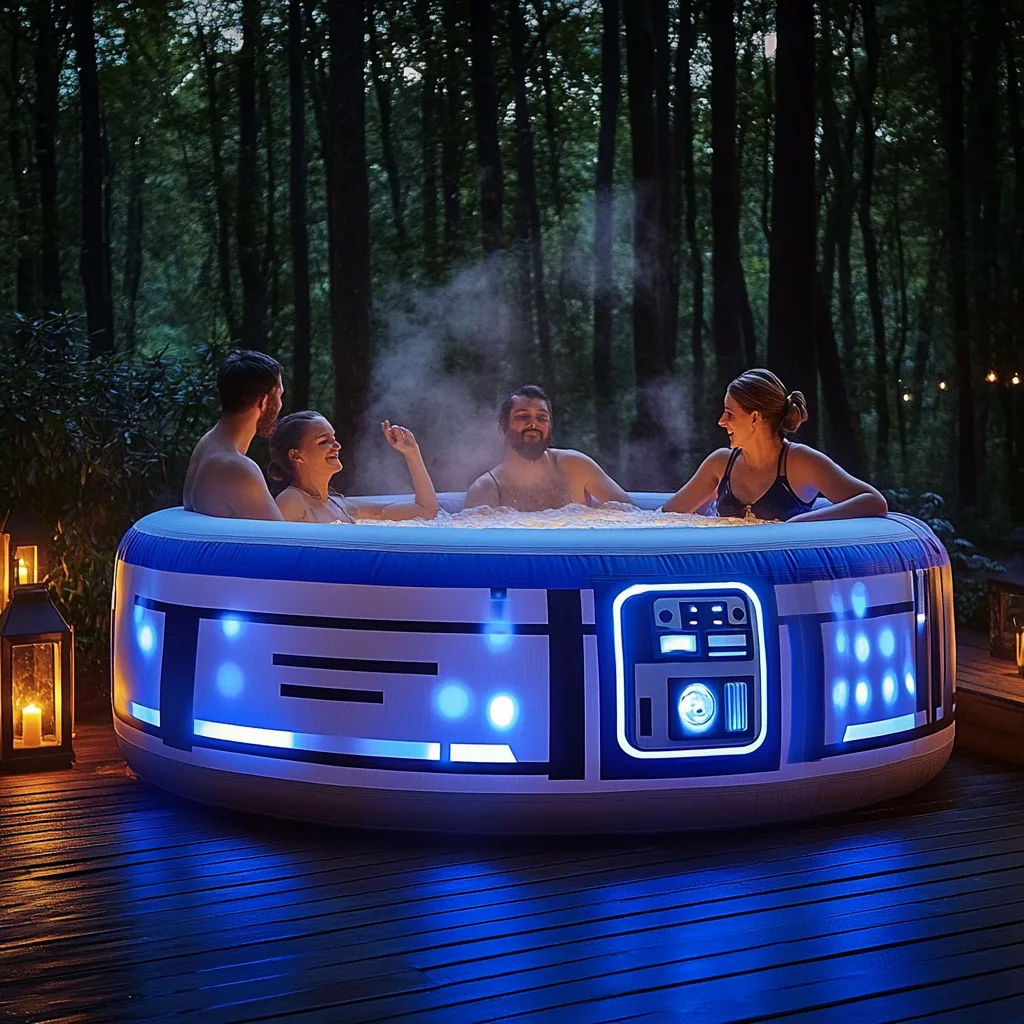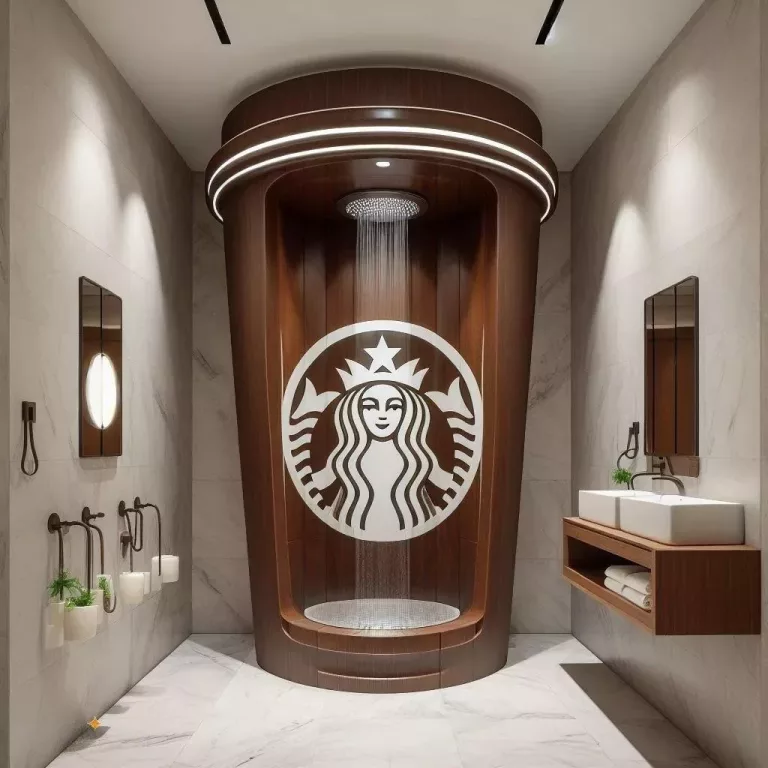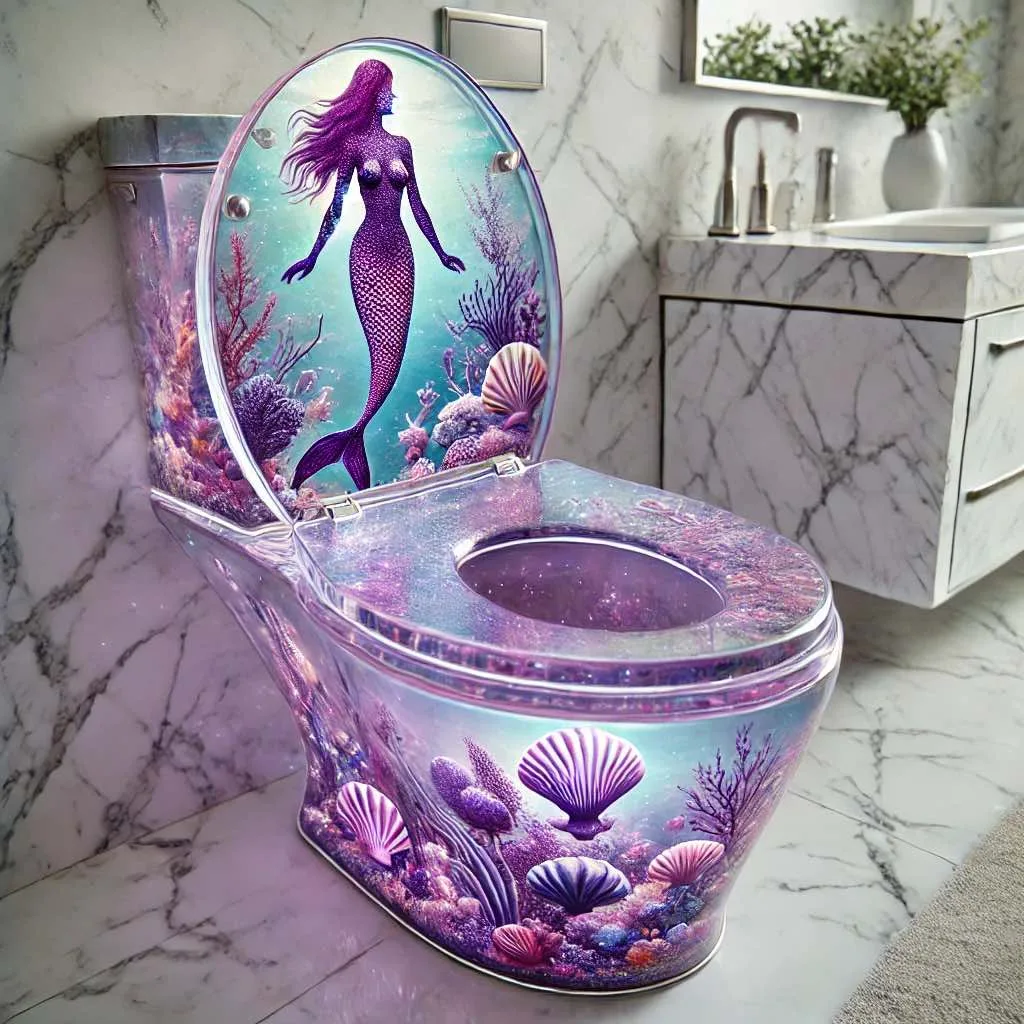The Artistry Behind Epoxy Nature Sinks
In the world of interior design, sinks have long evolved beyond their basic functionality to become an integral part of a home’s aesthetic. The rise of bespoke, handcrafted pieces has shifted the focus from utilitarian design to artistry and personalization. Enter the epoxy nature sinks—a perfect blend of natural beauty, artistic expression, and modern functionality. These sinks have emerged as a popular choice for those looking to bring the outdoors inside, offering a unique and visually striking statement that transforms everyday use into a luxurious experience.

Epoxy nature sinks are crafted using epoxy resin combined with elements of nature, such as wood, stones, leaves, or even miniature landscapes, encapsulated within the sink’s surface. The result is a stunning piece of functional art, where the organic beauty of natural elements merges with the glossy, smooth surface of epoxy resin to create a visually appealing and durable sink. These sinks have gained popularity for their ability to create a sense of harmony with nature, while offering a highly customizable design that suits a variety of home styles.
In this article, we’ll delve deeply into the world of epoxy nature sinks, exploring their origins, materials, design processes, and how they’re transforming bathrooms and kitchens into nature-inspired retreats. We’ll also look at how epoxy sinks stand out in terms of durability, versatility, and aesthetic appeal, creating an immersive experience for homeowners who appreciate both form and function.
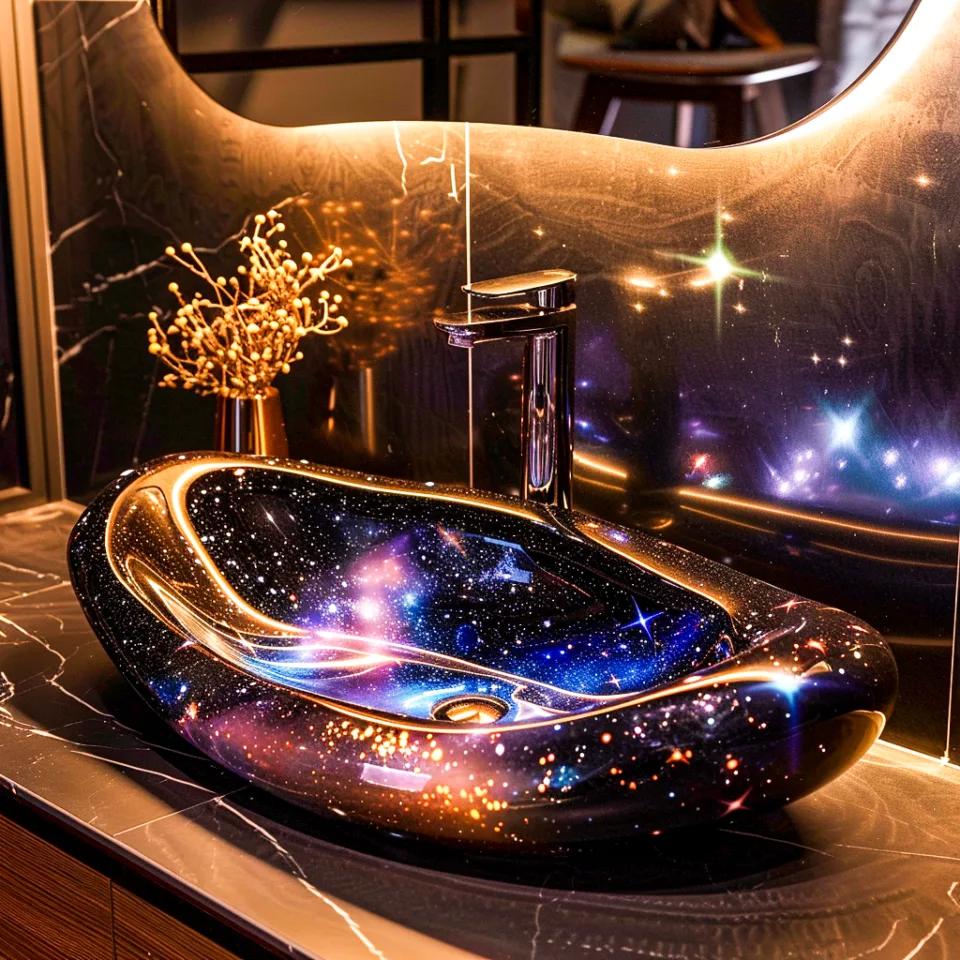
Crafting the Epoxy Nature Sink Experience
The Origins and Inspiration of Epoxy Nature Sinks
The concept of nature-inspired design has been around for centuries, with artisans and designers often drawing from the organic world to create functional art. The idea behind epoxy nature sinks takes this inspiration to the next level, integrating actual elements of nature into everyday household fixtures. Epoxy resin, known for its versatility and strength, has become a popular medium for encapsulating various materials, offering endless possibilities for design.
One of the earliest uses of epoxy resin in home design was in countertops and tables, where the clear resin was used to highlight and preserve live-edge wood, stones, and other natural materials. As the use of epoxy expanded into other home fixtures, it naturally found its way into the realm of sinks. Homeowners and designers began experimenting with epoxy to encapsulate natural elements within the sink basin itself, creating a seamless fusion between art and utility.

The inspiration for epoxy nature sinks comes largely from a desire to reconnect with nature, especially in urban environments where natural elements may be less present. These sinks serve as a reminder of the natural world, bringing the beauty of rivers, forests, and oceans into the home in a tangible and functional way.
Materials and Design Process
The process of crafting an epoxy nature sink is as intricate as the final product is stunning. Every sink is a unique work of art, designed to showcase both the natural materials and the craftsmanship of the artisan. The process typically involves several key steps:
1. Selection of Natural Elements
One of the defining features of an epoxy nature sink is the incorporation of natural elements. These can include pieces of live-edge wood, river stones, shells, leaves, flowers, or other organic materials. The choice of materials depends on the desired aesthetic and can vary widely depending on the sink’s intended environment. For example, a sink designed for a coastal-themed bathroom may incorporate sand and seashells, while a rustic kitchen sink might feature wood and river stones.

2. Mold Creation and Sink Shape
Before the epoxy and natural elements are added, a mold is created to form the shape of the sink. The mold can be customized to create any shape or size, allowing for endless possibilities in design. Whether the homeowner prefers a traditional round basin or a more modern, geometric shape, the mold sets the foundation for the sink’s final form.
3. Epoxy Resin Pouring and Encapsulation
Once the natural elements are arranged within the mold, the epoxy resin is mixed and poured over them. The resin is usually clear or tinted to enhance the natural materials inside. As the resin cures, it hardens, encasing the organic materials and giving the sink its characteristic glossy, glass-like finish. The curing process is critical to ensuring the durability and longevity of the sink, as it creates a waterproof, scratch-resistant surface.
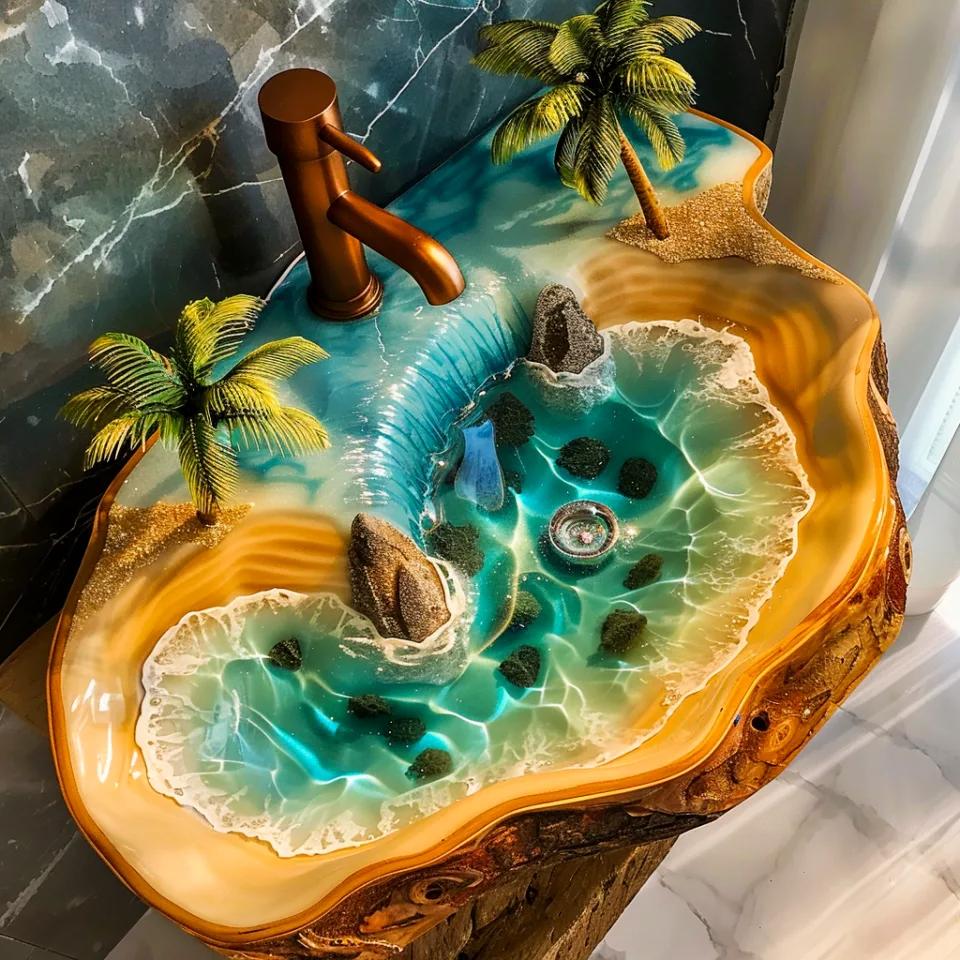
4. Sanding, Polishing, and Finishing Touches
After the epoxy has fully cured, the sink is carefully sanded and polished to achieve a smooth, flawless surface. This step enhances the depth and clarity of the resin, allowing the natural elements inside to truly shine. The final touches, such as plumbing connections and mounting hardware, are added to complete the sink and make it functional for everyday use.
Why Choose Epoxy Nature Sinks?
There are many reasons why homeowners and designers are increasingly opting for epoxy nature sinks over more traditional sink materials like ceramic, stainless steel, or stone. The unique blend of artistry, personalization, and practicality makes epoxy sinks an attractive option for anyone looking to elevate their interior spaces.

1. Aesthetic Appeal: Bringing Nature Indoors
One of the main draws of an epoxy nature sink is its ability to bring the beauty of the natural world into the home. The encapsulated natural elements create a visual experience that mimics the serenity of the outdoors, transforming the bathroom or kitchen into a peaceful retreat. Each sink is a one-of-a-kind piece, with no two designs ever being exactly the same. This makes epoxy nature sinks perfect for homeowners who value individuality and uniqueness in their home décor.
The transparency of the epoxy resin adds a three-dimensional quality to the sink, allowing light to pass through and illuminate the natural materials inside. This creates an almost magical effect, as the leaves, stones, or wood appear to float within the sink. Depending on the materials used and the lighting in the room, the sink can take on different appearances throughout the day, adding to its dynamic, living quality.
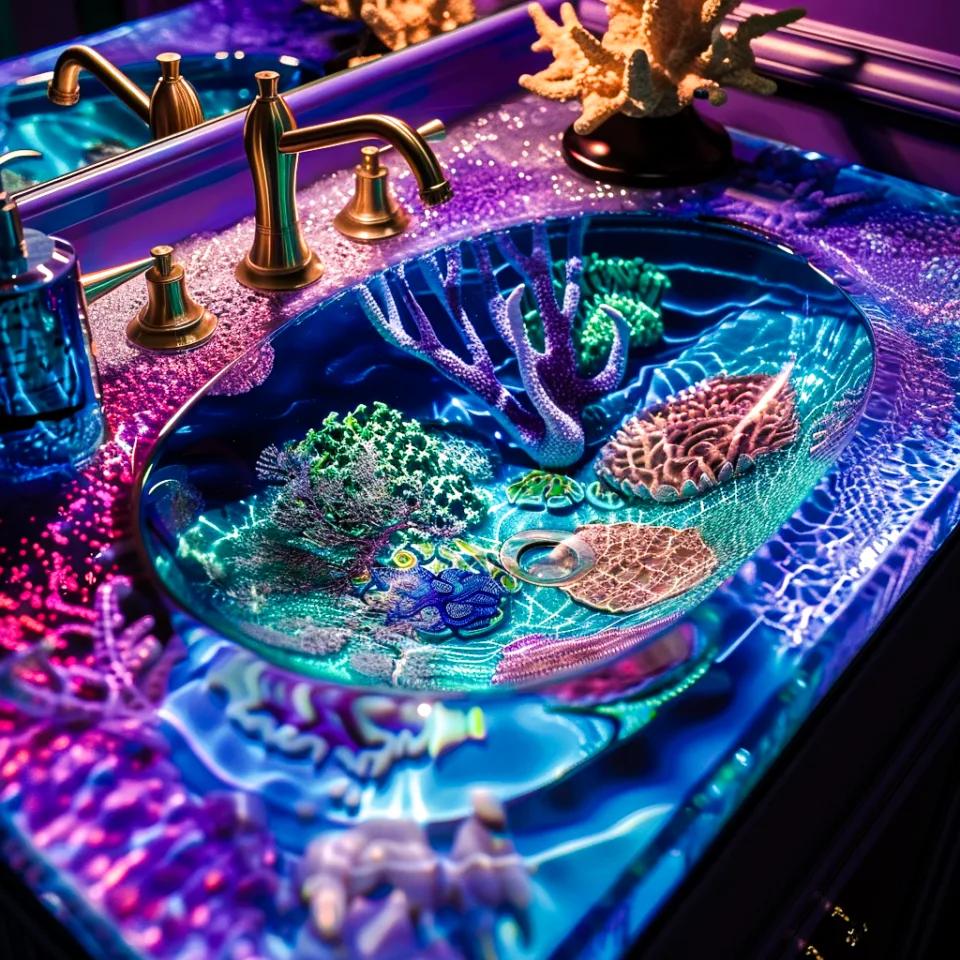
2. Durability and Functionality
Despite their delicate appearance, epoxy nature sinks are incredibly durable. Epoxy resin is known for its strength and resistance to water, heat, and stains, making it an ideal material for sinks that are exposed to frequent use. The resin creates a protective layer over the natural elements, ensuring they are preserved for years to come. Unlike traditional sink materials, epoxy sinks are less prone to cracking or chipping, and any minor scratches can often be buffed out with minimal effort.
The non-porous surface of epoxy resin also makes these sinks highly hygienic, as they do not harbor bacteria or mold. This is an important feature, especially in kitchen or bathroom settings where cleanliness is paramount. The smooth, glossy finish is easy to clean and maintain, requiring only a mild soap and water solution for regular upkeep.

3. Customization and Personalization
Another significant advantage of epoxy nature sinks is their level of customization. Homeowners can work with designers and artisans to create a sink that reflects their personal style and complements the overall aesthetic of the space. Whether you want to incorporate a specific type of wood, a collection of seashells from a favorite beach, or even a miniature landscape scene, the possibilities are virtually limitless.
This level of personalization allows homeowners to create a sink that not only serves a functional purpose but also tells a story. The sink becomes a focal point in the room, drawing attention and sparking conversation. For those who appreciate the beauty of nature and the artistry of handcrafted items, an epoxy nature sink offers a unique way to express their style and creativity.
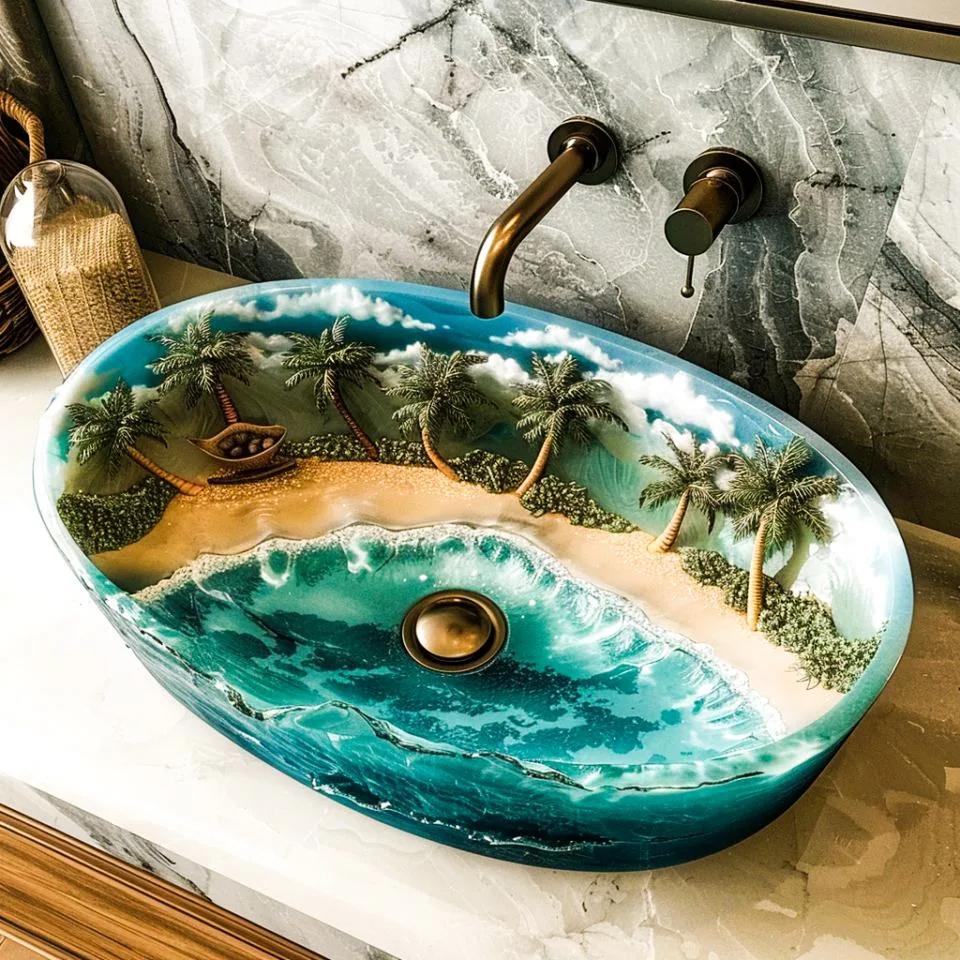
Incorporating Epoxy Nature Sinks into Home Design
Given their unique aesthetic, epoxy nature sinks can be incorporated into a wide variety of design styles, from rustic and natural to modern and minimalist. Their versatility allows them to fit seamlessly into both bathrooms and kitchens, where they can become the centerpiece of the space.
1. Rustic and Natural Themes
In rustic or nature-inspired homes, epoxy nature sinks serve as a perfect complement to other organic materials like wood, stone, and metal. The natural elements inside the sink can be chosen to match the surrounding environment, such as using river stones in a cabin bathroom or reclaimed wood in a farmhouse kitchen. Paired with natural lighting, earth tones, and other organic textures, these sinks create a sense of cohesion and harmony with the natural world.

2. Modern and Minimalist Spaces
For more modern or minimalist interiors, epoxy nature sinks provide a striking contrast to sleek, clean lines and neutral color palettes. The intricate details inside the sink add visual interest and texture to an otherwise simple space, acting as a piece of functional art. A minimalist kitchen or bathroom can be elevated with the addition of a custom epoxy sink, turning a practical fixture into a work of art that balances nature with modern design.
3. Coastal and Ocean-Inspired Designs
Coastal homes and ocean-themed spaces are ideal settings for epoxy nature sinks that incorporate elements like seashells, sand, and driftwood. These sinks can mimic the feel of a beachside escape, bringing the soothing qualities of the ocean indoors. Paired with soft blues, greens, and whites, an epoxy nature sink in a coastal home can create a calming atmosphere reminiscent of the sea.

The Future of Functional Art
The epoxy nature sink represents a new frontier in home design, where functionality meets creativity, and art becomes a part of daily life. These sinks offer homeowners a way to connect with the natural world, while also enjoying the durability and practicality of a modern fixture. Whether used in a rustic cabin, a modern apartment, or a coastal retreat, an epoxy nature sink brings a touch of the outdoors inside, transforming any space into a personal sanctuary.



